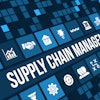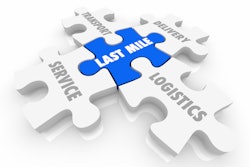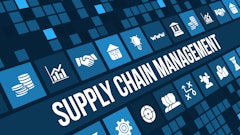
While current global forecasts show a slow pace of GDP growth for 2023, savvy merchants can get ahead of their competitors and improve their customer retention and revenue growth by focusing on three key themes: the merchant experience, the customer experience and the post-purchase experience.
One of the most important things to consider when optimizing your merchant experience, customer experience and post-purchase experience is making sure to master your supply-chain disruptions before they get the better of you—and your business’s profit margins.
Supply chain disruptions are more common than ever and businesses need to adapt. The pandemic shut down manufacturing plants all over the globe and even now, businesses can’t reliably source many materials in a timely manner. In fact, 66% of businesses reported “some” or “major” supply chain disruptions in 2021. Businesses are facing material shortages and production delays with both inbound and outbound logistics. To meet customer demand, it will be important for businesses to act with agility and transparency. There are a few key strategies to consider when trying to get your supply chain under control. We’ll discuss several of them here, including:
● Investing in reverse logistics
● Automating your business from end to end
● Improving the post-purchase experience for your customers
Investing in reverse logistics
Tools for supply chain forecasting and inventory management have become affordable for smaller businesses, and the brands that leverage them are seeing positive results. More than half of the 22% of SMBs that use inventory management software save at least 5 hours a week and inventory management technology can help companies reduce inventory carrying costs by an average of 30%. Forward-thinking companies are using agile inventory planning to ensure they have the right stock in place for each geographic region and season, based on data trends and forecasts.
Rather than ship from a central warehouse, many merchants are relying on a 3PL or group of partners to manage a distributed fulfillment strategy, in which products are stocked across a range of fulfillment centers nationally (or even globally), enabling fast and affordable shipping to customers in any region. 58% of shippers indicate they are increasing their use of outsourced logistics services this year, with 86% of customers saying that using a 3PL results in better customer support and 75% saying that it results in cost reductions.
Having these reverse logistics tools in place allows you to shape customer expectations around supply chain issues, not the other way around. Rather than miss out on a sale if a product that a customer want is out of stock, you can provide curated product recommendations to show relevant alternatives. By using a 3PL that stores products across multiple distribution centers, you can expedite shipping rather than introduce further delays into the process when shipping from a single geographic hub. Additionally, you can use inventory management tools to provide real-time visibility and updates on order status to your customers, providing them with peace of mind. These are just a few ways that having a reverse logistics plan and the right tools in place can help you weather tough supply chain issues.
Automating your business from end to end
More than half of all employees believe they can save 240 hours a year of work time with automation, empowering them to focus on more specialized tasks rather than repetitive labor.
Additionally, pairing hyper-automation technology with improved operational procedures would reduce operational expenses by 30% by 2024. Most businesses are already realizing the benefits of automation: Gartner found that 69% of daily management tasks will be completely automated by 2024.
Make use of automated tools to support your operations from end to end. For example, you can use chatbots and help desk solutions to help customers answer questions easily and navigate your site, which will reduce customer support tickets and help customers get answers to their questions more quickly. On the marketing side, you can create automated marketing workflows with personalized content that’s triggered by user behavior, to drive a higher engagement rate and encourage customers to convert more frequently. And by using automated returns management tools, you’ll be able to reduce customer support time spent managing refunds and returns, resulting in faster customer service and reduced manual labor needs.
Rather than relying on a manual returns process, which can be slow and frustrating for customers, your brand can integrate seamless returns management technology to provide a simple, fast user experience for customers to return products via a self-service portal. This type of solution can analyze data to determine whether or not to request a product back into inventory, enabling you to save money by offering return-less refunds on products that aren’t likely to be resold. The solution can also help you optimize your shipping costs by automatically determining the most efficient and cost-effective routes and carriers.
Improving the post-purchase experience for your customers
Embracing a more agile fulfillment strategy is a great way to improve your customers’ post-purchase experience. Technology is crucial to gaining the visibility to make data-driven choices about your supply chain. You can use inventory management technology to help you track inventory and manage fulfillment across a wide distribution network, seamlessly moving product from one hub to another based on need. You can also make use of micro-fulfillment services for fast delivery in a wider geographic range and can use an automated picking system to help save time and money when processing smaller orders.
Ecommerce merchants are making the most of new trends in fulfillment to deliver fast, efficient logistics and reverse logistics networks. In addition to using a variety of geographically distributed warehouse hubs, merchants are also making use of “microfulfillment” centers in urban areas, which can easily facilitate same-day shipping and returns within those cities. They’re also upgrading their technology to support improved fulfillment and reverse logistics: an automated goods-to-person system can be 6x more efficient than a manual one. 48% of ecommerce merchants are adding or upgrading their parcel/LTL transportation management system (TMS) while 36% are automating parcel sortation, and/or utilizing software for rate shopping (32%) and parcel analytics (29%).
Most importantly, optimizing your returns process is key for customer retention. 96% of customers would buy again from a business that provides a "very easy" or "easy" return process. Customers are most satisfied (73%) with returning via drop-off point, without the need to re-pack the item and are least satisfied with returning by mail (56%). Loop’s own 2023 Consumer Report found that a significant majority (70%) of shoppers report a willingness to pay for a more convenient, “premium” return experience, such as a scheduled pick-up from their home that doesn’t require the customer to repack the item. In fact, 50% of customers have already paid for a premium returns experience.
In conclusion, there are plenty of ways to improve the functionality of your overall business operations. Exercising these three key strategies will not only prepare you for supply chain disruptions. They’re also great ways to improve your overall returns experience and help boost your business’s growth in the long term.















![Pros To Know 2026 [color]](https://img.sdcexec.com/mindful/acbm/workspaces/default/uploads/2025/08/prostoknow-2026-color.mduFvhpgMk.png?ar=16%3A9&auto=format%2Ccompress&bg=fff&fill-color=fff&fit=fill&h=135&q=70&w=240)


